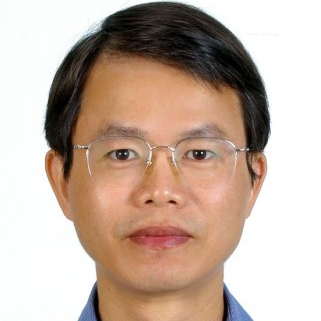Selected Papers from 2019 IEEE Eurasia Conference on Biomedical Engineering, Healthcare and Sustainability (IEEE ECBIOS 2019)
A special issue of Sustainability (ISSN 2071-1050). This special issue belongs to the section "Health, Well-Being and Sustainability".
Deadline for manuscript submissions: closed (30 November 2019) | Viewed by 53989
Special Issue Editors
Interests: IOT devices; photovoltaic devices; STEM education
Special Issues, Collections and Topics in MDPI journals
Interests: computerization of pharmacy business; drug therapy for renal excretory drugs; eradication therapy of Hericobacter pylori
Special Issues, Collections and Topics in MDPI journals
Interests: servo motor drive design, neural network control, intelligent robotics
Special Issues, Collections and Topics in MDPI journals
Special Issue Information
Dear Colleagues,
The 2019 IEEE Eurasia Conference on Biomedical Engineering, Healthcare, and Sustainability (IEEE ECBIOS 2019) will be held in Okinawa, Japan on 31 May~3 June, 2019, and it will provide a unified communication platform for researchers in the fields of biomedical engineering, healthcare, and sustainability. Recently, healthcare has undergone a sector-wide transformation thanks to advances in computing, networking technologies, big data, and artificial intelligence. Healthcare is not only changing from being reactive and hospital-centered to preventive and personalized, but it is also changing from being disease focused to well-being centered. Healthcare systems, as well as fundamental medicine research, are becoming smarter and enabled in biomedical engineering. Furthermore, with cutting edge sensors and computer technologies, healthcare delivery could also yield better efficiency, higher quality, and lower cost.
This Special Issue on “Selected Papers from the 2019 IEEE Eurasia Conference on Biomedical Engineering, Healthcare, and Sustainability (IEEE ECBIOS 2019)” is expected to select excellent papers presented in IEEE ECBIOS 2019 on the topic of sustainability. It links several disciplines, including the environmental, cultural, economic, and social sustainability of human beings, which provide an advanced forum for studies related to sustainability and sustainable development. Our aim is to encourage scientists to publish their experimental and theoretical research relating to natural sciences, social sciences, and humanities in as much detail as possible in order to promote scientific predictions and impact assessments of global change and development. Potential topics include but are not limited to the following:
- Water pollution and sanitation;
- Toxic chemicals and hazardous and radioactive wastes;
- Degradation of ecosystems and species, and concomitant risks to human well-being;
- Health-related aspects of sustainability;
- Sustainable chemistry;
- New and renewable sources of energy;
- Sustainable energy preservation and regeneration methods;
- Land and aquatic ecosystems maintenance and biodiversity preservation;
- Sustainability tools;
- Applications of sustainability;
- Sustainability science;
- Other topics related to sustainability.
Distinguished Prof. Dr. TeenHang Meen
Prof. Dr. Yusuke Matsumoto
Distinguished Prof. Dr. Ming-Shyan Wang
Guest Editors
Manuscript Submission Information
Manuscripts should be submitted online at www.mdpi.com by registering and logging in to this website. Once you are registered, click here to go to the submission form. Manuscripts can be submitted until the deadline. All submissions that pass pre-check are peer-reviewed. Accepted papers will be published continuously in the journal (as soon as accepted) and will be listed together on the special issue website. Research articles, review articles as well as short communications are invited. For planned papers, a title and short abstract (about 100 words) can be sent to the Editorial Office for announcement on this website.
Submitted manuscripts should not have been published previously, nor be under consideration for publication elsewhere (except conference proceedings papers). All manuscripts are thoroughly refereed through a single-blind peer-review process. A guide for authors and other relevant information for submission of manuscripts is available on the Instructions for Authors page. Sustainability is an international peer-reviewed open access semimonthly journal published by MDPI.
Please visit the Instructions for Authors page before submitting a manuscript. The Article Processing Charge (APC) for publication in this open access journal is 2400 CHF (Swiss Francs). Submitted papers should be well formatted and use good English. Authors may use MDPI's English editing service prior to publication or during author revisions.
Keywords
- Health-related aspects of sustainability
- Sustainable chemistry
- Sustainable energy preservation and regeneration methods
- Sustainability tools
- Applications of sustainability
- Sustainability science.







